Here in the state of Washington, our governor declared a state of emergency in response to the spread of the COVID-19 disease and imposed a Stay Home—Stay Healthy order. There are four “essential activities” for which we may leave the safety and isolation of home, and the last of them is: “Engaging in outdoor exercise activities, such as walking, hiking, running or biking, but only if appropriate social distancing practices are used.” Rowing has long been one of my normal forms of exercise and it’s certainly a very effective method of achieving the social distancing we’re all now called upon to practice. When I decided to take a break from sitting at my desk working on this issue’s deadline, I rowed my 14′ New York Whitehall along the shore of Puget Sound. With a bit of kit aboard , the Whitehall is ready for rowing as well as taking a break at anchor.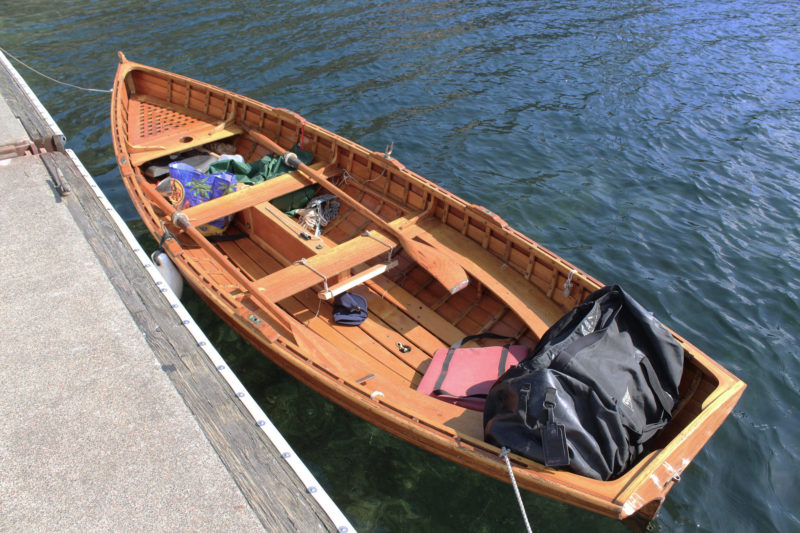
Join The Conversation
We welcome your comments about this article. To include a photo with your remarks, click Choose File below the Comment box.


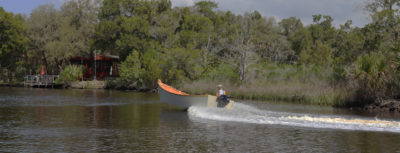
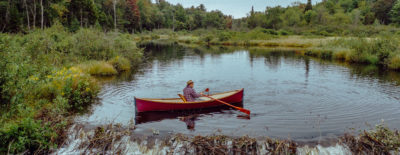
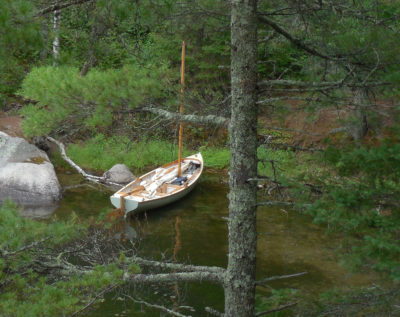
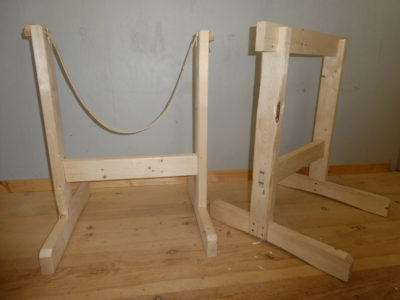
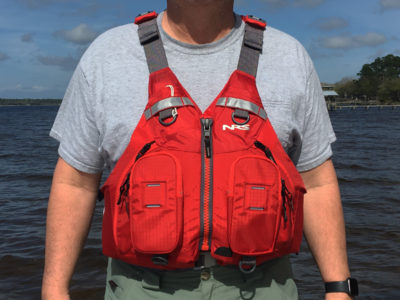

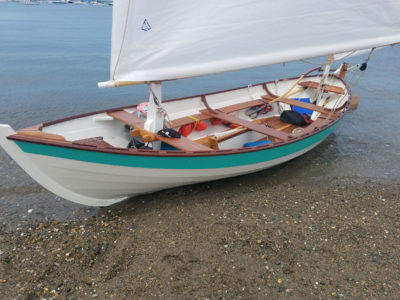
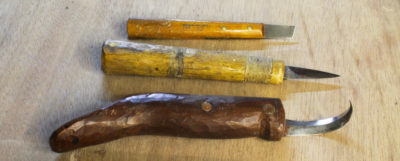

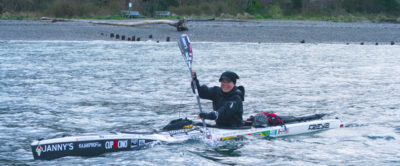
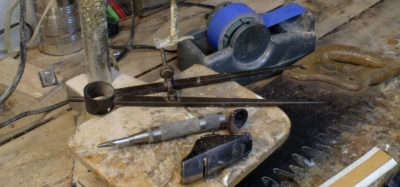
Looks like you picked a beautiful Pacific Northwest day! Where did your metal wind shield come from? I use the same kind of stove, but need a better way to ensure that the pot stays put in a sea. Any ideas?
Thanks,
Michael Moore
If you search on the web for camping stove windshield, you’ll get a lot of options and there a many folding types identical to mine with its 12 plates. As for stabilizing a pot in a rocking boat, I don’t have any hints I can pass along. I avoid cooking in my boats if they’re not being still.
I bought a gimbaled lamp holder, pretty large, with the expectation that a butane pack stove will set into the inner ring. The lamp holder is attached to a bracket which clamps to a thwart. For heavy pots, like a pot of water, you might want to thru-bolt the bracket to a thwart. I hope to try this this summer. Some ingenuity may be required to seat the pack stove into the inner gimbal ring, but I don’t expect much trouble.
Kia Ora from New Zealand
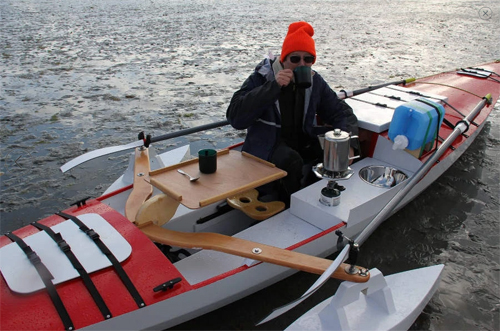
Enjoyed reading your mini adventure outing, Chris, and replying to you, Michael, regarding a cooking galley setup in your boat. I’m just about to construct a galley unit for my newly acquired Angus Row Cruiser. Colin Angus, designer of Angus boats, has designed a portable galley setup with which can clamped to the gunnels or placed on deck. It has a cooking platform with the cooker firmly positioned in a inset space and a stainless-steel bowl for washing up all with a windshield surround, plus an eating tray with a edging and cup holder and a water container with tap held by a bungee. Three pieces to have on deck for luxury. All easy to make out of marine ply and easy setup and stowable.
Cheers
Denis
O. A. R. S. Nelson
Nelson, New Zealand
As I was banging my head against the wall and getting tired of reading the dictionary a muse seemed to call….”Check your emails”….
And there you were……A New Issue…
Thanks, Chris… Now if the bumps on my head will go down, all will be right with the world.
I’ve found flameless cookers similar to self-heating MREs handy on canoe outings. There are several brands, I’m only familiar with Barocook. One model is really just a bag – add an unopened can of soup, the heating pouch, a little water, seal the bag, and 15 minutes later you have a hot meal. You can even be cooking while underway.
What a great, inspiring article! We are sequestered on a 34′ boat in San Diego, and it’s pretty darned wonderful. And a lot of people are enjoying the Spring weather and heading out in everything from the venerable Sunfish on up!
Thanks for the lovely look at the Pacific NW!
In this crisis, I think we have to try to continue to move forward. We have to get out the boats, and dig into the recipe books, and organize the camping gear. We owe it to those of our colleagues who feel overwhelmed – we have to try to set an example.
Thank you for this, Chris, from across the line.
We are sheltering here in Vancouver, BC, in much the same fashion, and wondering what each day will bring. My wonderful companion suggested we assemble my recently acquired CLC Passagemaker take-apart dinghy and take it for a row one of these milder weather mornings. Your article was just the ticket to encourage me, and tomorrow I will work out the carry method to get this fine craft from our yard to the chuck for an inaugural cruise. Social distancing will be observed, and we may at the same time enjoy being on the water, as we all really do here.
Cheers, Dale
Ciao, Chris
“…so I for my stint in the boat brought my book about my favorite artist, Andrea del Sarto”
Leggi il libro in lingua italiana?
[Are you reading the book in Italian?]
And of course there are those who will make it more difficult for us by not abiding by the rules. I certainly hope you do not lose access to your ramp, but I fear you are right to think you will.
… “as more sobering than camp”… very nice… also, big book in a small boat
Thank you for your service. Cheers!
Hey kids! Get off my lawn! 😉
Where does one buy a cagoule?
Paul
Please see my article on making a cagoule. I haven’t been able to find a manufactured version of the cagoule on the web. The closest thing is Exped’s Exped BivyBag Duo UL. It is longer and would need to be hiked up with a belt for walking. The sleeves are shorter and the hood is a tube. The US branch of Exped no longer has the Biybag Duo on its website but the Austrian branch has it on their website. Amazon lists the Bivybag for sale for $129. Neither of these links will lead to good photos of the Bivybag Duo, but you can get a good look at it on an Exped Youtube video.
Campmor used to have a cagoule, about 40 bucks or so, but I can’t find it on their website. They don’t seem to have a search function.
I used it in Alaska, and it was like wearing your own tent during Alaska’s frequent rain.
Thanks so much, Chris, for this lovely account of your Johnnycake outing. The geographical references were perfect and I could follow your course quite well on Google maps. Hope you may continue your Puget Sound rowing excursions that may hopefully soon include sailing as well.
Brad
Thank you for the lovely and quietly inspiring piece. The North Texas version we have been trying is to drive 5 minutes to a flood-retarding pond with a one kilometer circumference, put in some serious exercise-level paddling combined with lengthy chatting with the local ducks and beaver, then head back home. There I get out the one-burner propane stove and make flapjacks. When combined with New Hampshire dark maple syrup, surely the food of the water gods!
No trip too small, too close to home to be treated as an adventure. The walk across the bluff and down the stairs to Golden Gardens has hosted many a night-hike adventure.